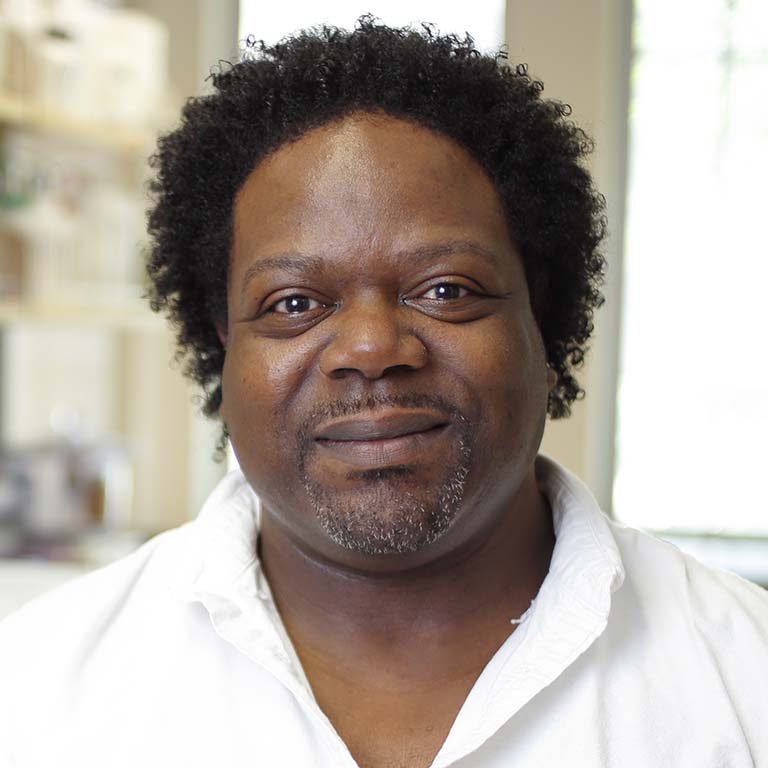- Postdoctoral Training, Institut Pasteur, Paris, France, 2002
- Ph.D., University of British Columbia, 1998
- M.Sc., University of Toronto, 1994
- B.Sc., University of Ottawa, 1991

Dean Rowe-Magnus
Associate Professor, Biology

Associate Professor, Biology
Biology Bldg. 451
812-856-0723
HGT among the prokaryotes is a perpetual phenomenon that has a profound impact on bacterial evolution. The most striking example of this is the emergence and spread of antibiotic resistance among human bacterial pathogens over the past seven decades. It is now clear that acquisition of a gene from an exogenous source that confers resistance is the most common solution adopted by bacteria to escape antimicrobial activity, rather than mutation in a resident gene. Integrons are specialized genetic systems that capture functional genes, known as gene cassettes, by site-specific recombination (fig. 1) and they are the primary mechanism for antibiotic-resistance gene capture and dissemination among Gram-negative bacteria. More than 100 different antibiotic resistance genes, covering most classes of antimicrobials presently in use, are structured as gene cassettes in integrons. The stockpiling of these cassettes in integrons has contributed substantially to the current dilemma in the treatment of infectious disease, as integrons containing up to 8 resistance cassettes have been found in multiple-resistant clinical isolates. The association of integrons with mobile DNA elements such as transposons and plasmids facilitates their transit across phylogenetic boundaries and augments the impact of integrons on bacterial evolution.
Our finding of massive ancestral versions called super-integrons (SI) in the genomes of diverse bacterial species (fig. 2) has expanded the role of integrons in genome evolution. Containing more than 200 cassettes, the SIs of the Vibrionacea are the largest identified to date. Although the vast majority of SI gene cassettes are of unknown function, some of the genes they harbor are related to virulence and antibiotic resistance determinants characterized in clinical isolates. Furthermore, we have shown that several gene cassettes code for additional adaptive functions such as toxins, restriction enzymes and metabolic enzymes. This suggests that the activity of integrons permits bacteria to rapidly adapt to environmental changes by scavenging foreign genes that may ultimately endow the bacterium with an adaptive advantage. The epidemiology and pathogenesis of infections caused by Vibrio species differ significantly. Our lab is characterizing the SIs of the Vibrionaceae using a combination of sequencing, in vitro biochemical analysis, in vivo genetic manipulation, and DNA array and expression analysis. These studies will allow us to begin addressing questions about the role of SIs in the evolution of the Vibrionaceae into potent human and successful environmental organisms. A comparison of the SIs from these species should also reveal both common and unique cassettes that may yield clues about their common or unique function in the adaptation and evolution of this bacterial family.
Vibrio vulnificus (fig. 3) is a marine bacterium that is pathogenic to both humans and animals. The bacterium is highly invasive, causing primary septicimia and wound infections worldwide. The fatality rate of susceptible patients with primary septicimia can reach 75%, and death often occurs within hours of hospital admission. It alone is responsible for 95% of all seafood-related deaths in the United States and it carries the highest death rate of any food-borne disease agent. V. vulnificus forms biofilms on the surface of and colonizes plankton, algae, fish, eels and humans. It also exhibits a rugose phenotype and these variants form better biofilms and are more resistant to environmental stresses than non-rugose variants, suggesting that this phenotype contributes to the persistence of the bacteria in aquatic ecosystems. Greater understanding of biofilm formation and the rugosity could provide insight into approaches to decrease the Vibrio load in filter feeders and on biotic surfaces, and control the occurrence of invasive disease. It has recently come to light that the second messenger c-di-GMP (fig. 4) regulates a variety of cellular processes associated with the transition between planktonic and sessile lifestyles in many bacteria. Diguanylate cyclases synthesize the signaling molecule and phosphodiesterases degrade it and the activity of these enzymes is regulated by specific environmental signals. Receptor proteins bind c-di-GMP and affect a cellular response. In general, high intracellular concentrations of c-di-GMP promote biofilm formation and rugosity while repressing motility and virulence gene expression. We are characterizing how c-di-GMP, as well as other factors, regulates survival phenotypes in V. vulnificus. The characterization of biofilm formation and the rugose phenotype in V. vulnificus should advance our understanding of how the bacteria persists in the environment and how it switches from a free-swimming organism to colonizing oysters to invading human tissue.
Evolution
Genomics and Bioinformatics
Microbial Interactions and Pathogenesis